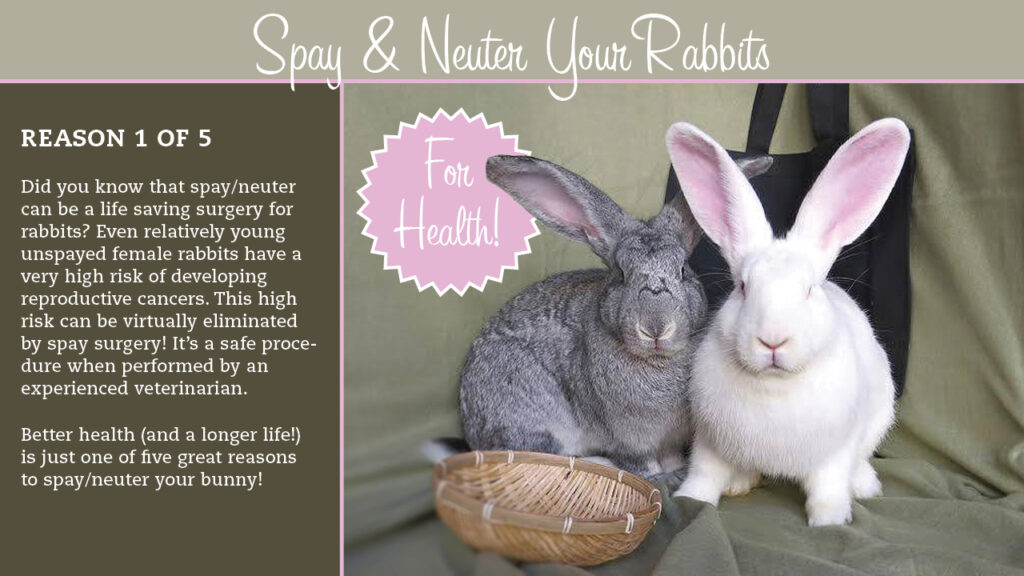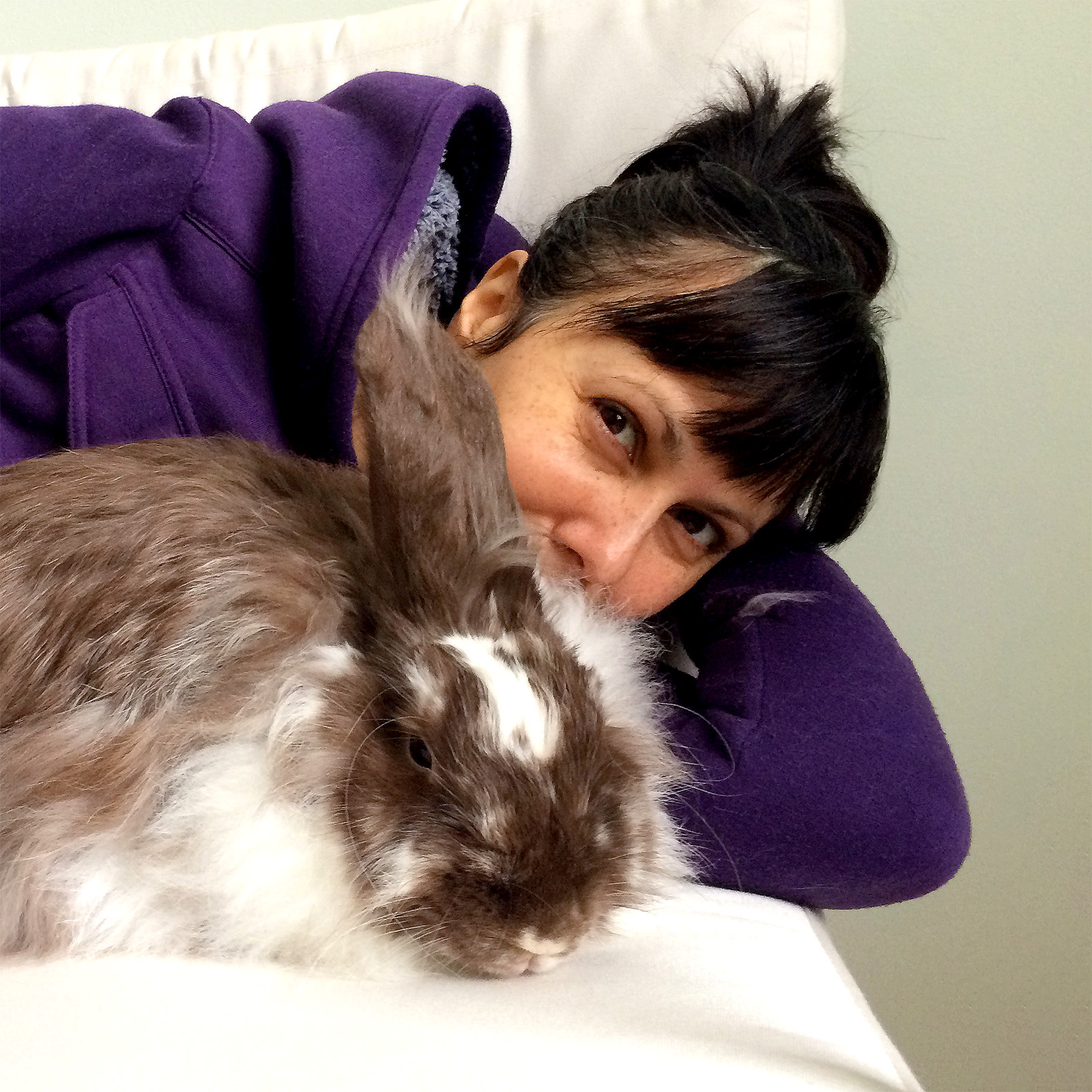part of a series on the benefits of spay/neuter
Spay and neuter for rabbits is literally a life saving surgery! Did you know that intact female rabbits have a very high risk — up to 85% — of developing reproductive cancers? Uterine changes and tumors in unsprayed females can be seen as early as 18-months old. As a female bunny ages her risk increases. Almost all female rabbits older than four years show uterine changes and/or tumors!
Why does this happen? Astrid Kruse, DVM explains: “In nature, rabbits are designed to reproduce as quickly and frequently as possible, and die of predation before reaching an age at which cancer becomes a risk. With such active uterine tissue, in which cells are constantly dividing, mutations that can give rise to tumors take place frequently.”
Spaying will virtually eliminate the risk of female rabbits developing these cancers while neutering eliminates the risk of testicular cancer in male rabbits. Females can be spayed around 4 to 6 months (depending on the veterinarian). Males can be neutered as soon as the testicles descend, usually around 10 to 12 weeks.
You can head off a life-threatening emergency by sterilizing your rabbit now. Many areas offer low-cost s/n services for households that qualify. Check your local rabbit rescue or animal shelter for recommended veterinary services and local low-cost s/n options. It’s a no-brainer! Spay or neuter your bunny for a longer life and a better quality of life.
Research Sources:
- Dana Krempels, Ph.D., Senior Lecturer in Biology University of Miami
- Susan Brown, DVM Founder, Midwest Bird & Exotic Animal Hospital Westchester, Illinois. Founder, Rosehaven Exotic Animal Veterinary Services. Medical Director for the Chicago Chapter of the House Rabbit Society
- William A. Mandel, DVM, Buckeye House Rabbit Society
- Astrid Kruse DVM, House Rabbit Network

